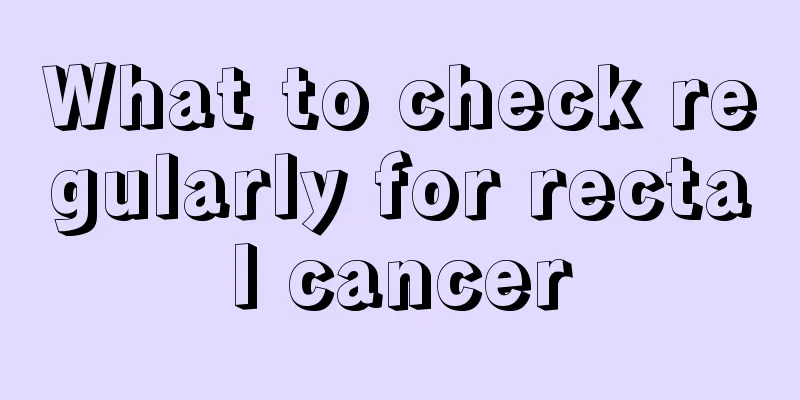The main causes of joint stiffness

|
Joint stiffness means that normal joint rotation, flexion and extension functions are restricted to varying degrees, but the function is not completely lost. For example, patients with rheumatoid arthritis have severe deformation of the metacarpophalangeal joints, joint stiffness, weakened finger flexion and extension ability, limited finger range of motion, and reduced grasping function, but the hand function is not completely lost. So what causes joint stiffness? How should it be treated? Causes and common diseases 1. Any cause of joint adhesion is also the cause of joint stiffness Edema, repeated injuries, passive traction, manual release, infection, foreign body stimulation, long-term plaster fixation, improper internal fixation with steel needles, internal fixation with steel plates, surgical trauma, lack of timely treatment after trauma, persistent swelling, and lack of timely exercise after fracture healing can all lead to ankylosis of the joints. 2. Joint diseases All joints with arthritis, especially rheumatic atrophic arthritis, are most likely to become fixed and cause stiffness. Such as joint ankylosis caused by acute suppurative inflammation, rheumatoid arthritis, ankylosing spondylitis, osteoarthritis, suppurative arthritis and bone tuberculosis. examine 1. Check the active and passive range of motion of the joints and record the degree of muscle atrophy and muscle strength. 2. X-ray examination: observe the joint space, articular surface, bone density, and the presence of osteoarthritis lesions such as bone hyperplasia. Differential Diagnosis Need to be differentiated from traumatic joint. Both have limited joint movement. The former has milder pain and more severe joint movement disorder, while the latter has more obvious pain, joint swelling, and milder joint dysfunction. X-ray examination: the former has normal or slightly narrow joint space, while the latter has narrow joint space, rough and uneven joint surface, increased bone density or osteoarthritis lesions such as bone hyperplasia. Treatment principles 1. Mild patients Local massage, physical therapy, external application of Chinese medicine, joint function exercisers and manual release can be used as therapies. Non-surgical therapies are also suitable for those with contraindications to surgery and as auxiliary treatments before and after surgery. 2. Severely ill patients Joint adhesion lysis should be performed. For patients with malformed fracture healing, the deformity should generally be corrected first. Those with local soft tissue defects should also undergo reconstructive surgery. Active and positive joint function exercises should be started as early as possible so that stiff joints can recover their functions as soon as possible. Joint function exercises are very painful, but they are still necessary after joint adhesion lysis surgery. |
<<: What to do if your lips are dry and itchy?
>>: What should I do if I have acne under my lips?
Recommend
What is Lynch syndrome
Lynch syndrome is a genetic disorder that increas...
What to do if you are born with bad hair quality
Many structures of our body are divided into natu...
What are the causes of liver cancer? 7 things you should know about the causes of liver cancer
my country is one of the countries with a high in...
Is it okay to run at twelve o'clock at night?
Night running is becoming more and more popular. ...
What are the symptoms of deep varicose veins?
For those who always watch TV, they must be famil...
What are the causes of death from advanced ovarian cancer?
Ovarian cancer is a common gynecological malignan...
Which is better for ripening, apples or bananas
In our life, we always buy some unripe things som...
What to do if blisters appear on your feet when wearing leather shoes
Leather shoes are made of leather material, so ma...
Why do I have frequent and painful urination?
Frequent and painful urination is a condition tha...
What to do if your face is oily and acne-prone
Everyone's skin is different. Some people hav...
Symptoms of prostate cancer What kind of care is provided for advanced prostate cancer
Prostate cancer is one of the most common disease...
What are the examination items for teratoma
Many patients do not know much about teratoma. In...
Which hospital treats cervical cancer best
In recent years, the number of patients with cerv...
What is the reason for swollen fingers? Pay attention to swelling in the hands when you wake up early
Many people have swollen hands when they wake up ...
Can aloe vera treat hair loss?
Nowadays, people often suffer from hair loss, and...









